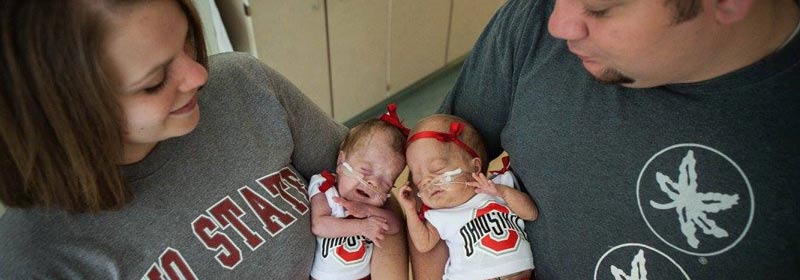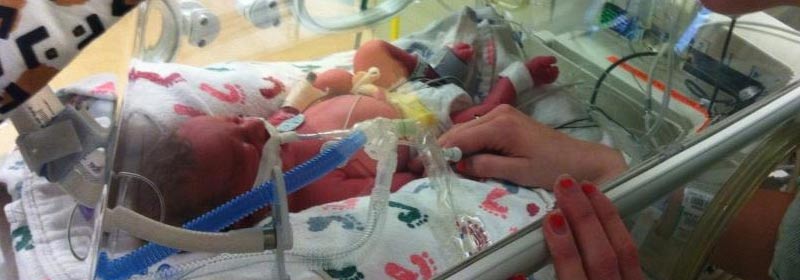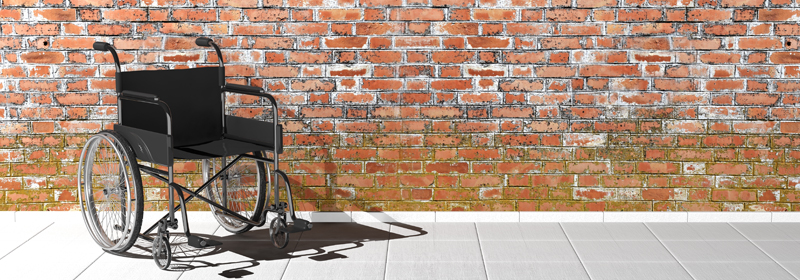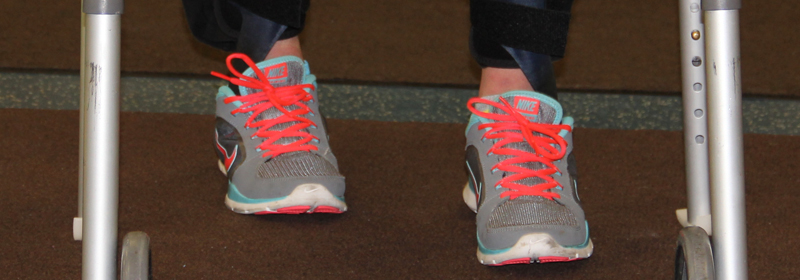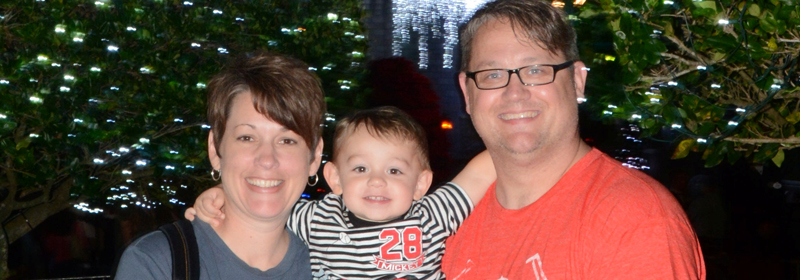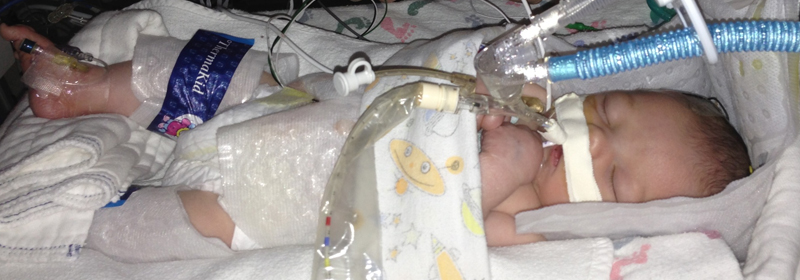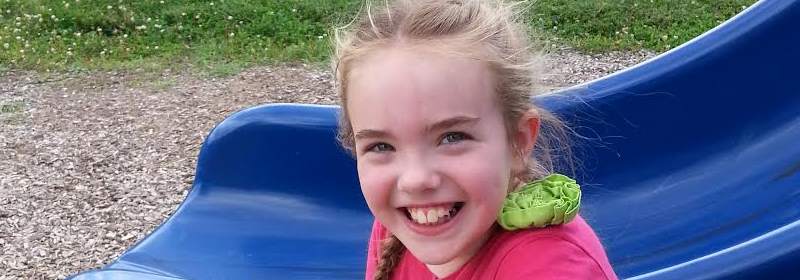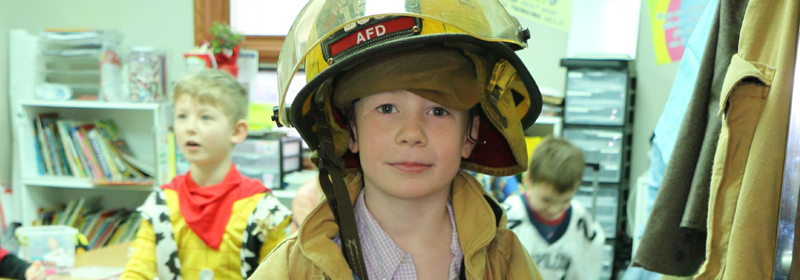Extremely Premature. Abundantly Blessed.
Fragile, tiny twins battling for their lives. After trying to get pregnant for over two years, it wasn’t supposed to be this way. There had been no complications. There had been no warnings. Yet somehow, that was the fate that Selah and Brynn were facing. These beautiful twins were born extremely premature after only 25 weeks’ gestation to first time parents, Ben and Kelsey, each weighing under 2 lbs.
Kelsey had experienced no issues during her pregnancy. She simply woke up one morning with contractions. After calling her doctor, Kelsey was instructed to head to the hospital to get checked out just to be safe. Doctors started running a myriad of tests but couldn’t determine why she was in labor. Even worse, they couldn’t find a way stop it. Five hours after arriving at the hospital, Selah started coming down the birth canal. Doctors immediately made the decision to deliver both girls through emergency cesarean. They feared that if they allowed Selah’s delivery to continue without intervention, the process would almost certainly kill her.
While this quick thinking saved the girls lives, their battle had only begun. Premature babies are not yet fully equipped to deal with life in our world. They are naturally behind in their development. They are forced to learn to do a lot of things on their own that should be done for them inside the womb. Additionally, their tiny bodies still have many underdeveloped systems such as the lungs, digestive system, immune system and skin. Babies do a lot of developing during the final trimester of pregnancy, and if they’re born early, they face a significant uphill battle.
Preterm birth is the leading cause of death among newborns. Those who survive are more likely to have lifelong health problems such as developmental delays, hearing loss, blindness, chronic lung disease, and cerebral palsy than full-term babies. About 25 percent of extremely premature infants (those born before 32 weeks’ gestation) suffer significant, long-term impairment of brain development. Ben and Kelsey were told Selah and Brynn had an 80% chance of surviving. The news was devastating, but Ben and Kelsey were optimistic as the girls appeared to do great the first 24 hours. There were no issues at all. That’s when their worlds were turned upside down.
The day after they were born, Selah and Brynn experienced pulmonary bleeds and struggled progressing. A few days later, it was discovered that both girls had an intraventricular hemorrhage (IVH), also known as a brain bleed. IVH of a newborn is bleeding into the fluid-filled areas (ventricles) inside the brain and occurs most often in babies that are born prematurely. Selah had a severe grade 4 bleed on the left side of her brain and a moderate grade 2 bleed on the right. Brynn had severe grade 4 bleeds on both sides. Because there is no way to stop bleeding associated with IVH, Ben and Kelsey were told that both girls would require surgery to place a tube (shunt) in their brains to drain fluid in hopes of relieving the pressure. Because of the severity of the bleeds, doctors told Ben and Kelsey that if they survived, both girls would never be able to eat or walk on their own and many other areas of their development would be significantly delayed.
Their initial brain scans following the bleeds showed a tremendous amount of damage. Seeing what little remained of their brains left a pit in Ben and Kelsey’s stomachs. Both girls had to undergo multiple brain and eye surgeries and have experienced health and development issues including hydrocephalus, pulmonary hemorrhages, respiratory distress, PDA, bowel issues and infections. In all, Selah and Brynn spent more than 4 months in the NICU before they were allowed to go home, connected to a host of tubes and leads to monitor everything from oxygen levels to sleep apnea.
Ben & Kelsey were determined to do whatever they could to give their girls the best chance to beat the odds stacked against them and provide a brighter future than doctors had predicted. As soon as they were released from the hospital, Selah and Brynn started receiving Hyperbaric Oxygen Therapy at Sara’s Garden. The family noticed changes immediately. From the moment treatments started, the sleep apnea monitors, which had been going off constantly, no longer registered any alerts or events. After just 2 days of treatments, Selah went from having eyes that bounced, floated, and disappeared below her eye lids, to looking around and trying to maintain a gaze. She is now able to track toys of all shapes and sizes about a foot away from her face and her eyes no longer float away or bounce!
Prior to Hyperbaric Oxygen Therapy, both girls were extremely far behind on their developmental charts. After two rounds of HBOT treatments, that is no longer the case. Brynn has now completely caught up to her adjusted age and Selah is making great strides. Both can now roll over and are gaining trunk and head control every day. Selah is gaining awareness and strength in her right side and beginning to use it considerably more. Brynn is crawling all over the place and can sit independently by herself.
To look at her scans, you would never know that Brynn had experienced severe grade 4 bleeds on both sides of her brain. In fact, Brynn’s next MRI following HBOT treatments showed that her brain had almost completely healed. The right side of Selah’s brain looks amazing as well. Her left side, while healing slower than the right side, has still improved dramatically. There has been so much healing and improvement in both girls’ brains that their neurosurgeons announced that no additional surgeries would be necessary. Ben and Kelsey were overjoyed when they were able to cancel the follow-up surgeries that had already been planned!
Thanks to Hyperbaric Oxygen Therapy services at Sara’s Garden, Selah & Brynn have begun shattering the limitations that were placed over them when they were born. Ben and Kelsey are certain that God has big plans for Selah and Brynn. They feel abundantly blessed to be able to witness their continued growth and watch how their stories unfold. No matter what you’ve been told, there is hope… for this and many other conditions. HBOT is treatment without drugs… without surgery… without pain.


